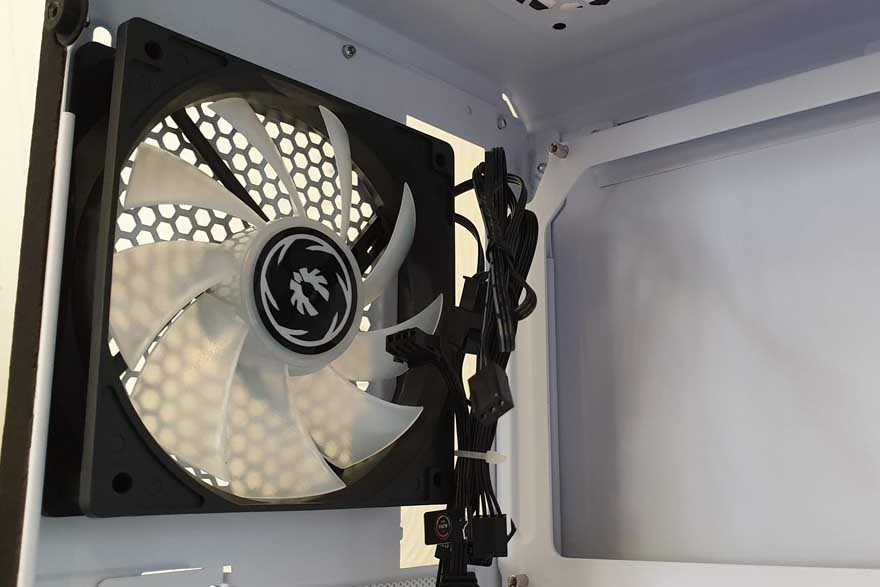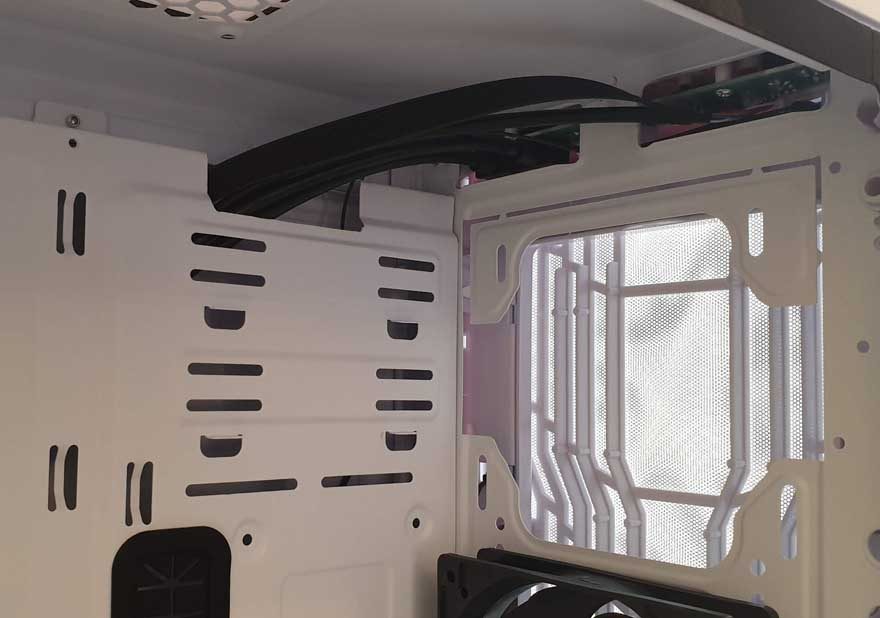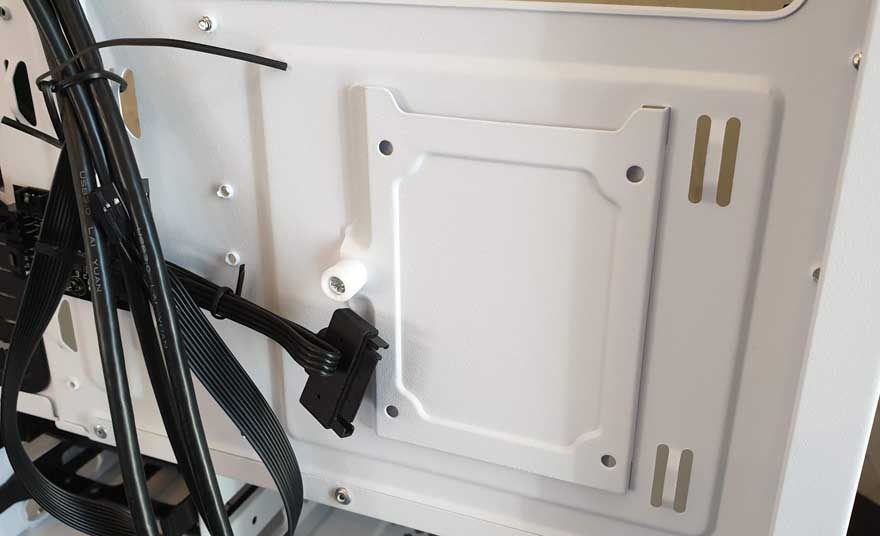BitFenix Enso Mesh Tempered Glass Aura Sync Case Review
Peter Donnell / 6 years ago
Interior
With the side panel removed, we have plenty of space for some serious hardware. It’s not a huge chassis, but with the PSU shroud hiding all the storage and stuff out of the way, you have a lot of room in the front of the chassis.

It’ll support up to an E-ATX motherboard, giving us the usual seven expansion slots to play around with. That’s more than enough room for a dual-GPU configuration, or any other expansion cards you may desire.

Cooling
In the rear, there’s a 120mm fan with frosted blades. It’s RGB with Aura Sync too, so it’ll match the colours of the lighting on the front panel. Of course, you could always swap it out for a 120mm AIO too if you desired.

In the front, there’s room for up to a 360mm radiator, but the slimmer design does mean that 280mm models aren’t supported.

There’s only a single intake fan pre-installed here, which is more than enough for a mid-range system. It’s not RGB, but since the front panel is RGB already, it doesn’t really need to be.

The PSU shroud hides a lot of stuff, however, there is a large cutaway here. This cutaway allows room for a third fan in the lower section, but also a radiator can use the full front panel too.

When you want to install any fans in the front, or just clean things up, you can just remove the cover thanks to the magnetic mounts.

Behind the Motherboard
There’s a reasonable amount of cable routing space. It’s not a lot, but it’s enough. However, the PSU shroud offers you extra room to stash excess cables. Unfortunately, the HDD bay at the bottom cannot be removed though, so be sure to stick to the recommended PSU lengths.

For additional storage, you can screw two SSDs directly to the chassis here.

Also, you can mount a third one towards the rear.

The aura sync RGB hub is simple enough, just hook up the fans and some SATA power and you’re ready to rock. There’s a sync cable to hook it up to your motherboard too, if it’s compatible.




















